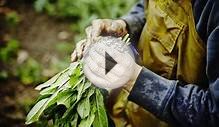
Good Farming Practices: “The production methods utilized to produce the insured crop and allow it to make normal progress toward maturity and produce at least the yield used to determine the production guarantee or amount of insurance, including any adjustments for late planted acreage, which are: (1) for conventional and sustainable farming practices, those generally recognized by agricultural experts for the area; or (2) for organic farming practices, those generally recognized by the organic agricultural industry for the area or contained in the organic plan.” 7 CFR 457.8
The handbook further defines what constitutes GFP, the process for determining whether a farmer has employed GFP, and the process for appealing an adverse GFP determination.
The release of this handbook is significant because it puts all of this information into one document for the very first time.
Why have GFP?
GFP are the procedures a farmer must employ in order to receive a full crop insurance indemnity when they have a loss. A farmer’s indemnity payment is reduced based on the amount of the loss that is attributed to their failure to employ GFP.
A well-defined standard for the production of a crop (aka GFP) reduces the moral hazards associated with federally subsidized crop insurance because a farmer that does not care for their crops up to the standard, cannot receive their full indemnity, thus having the standard encourages them to at least meet it. The history of federal crop insurance includes numerous instances of anemic attempts to grow a crop, episodes that took place only because of the existence of highly subsidized insurance.
In other words, without GFP rules, some landowners might be tempted to not adequately care for their crops since they know that if their crop fails they can still collect a full indemnity without penalty.
NSAC’s Work on GFP
What is and is not a GFP has been at issue over the years, especially as participation in the federally subsidized crop insurance program has grown. During congressional consideration of the Agriculture Risk Protection Act of 2000, NSAC successfully championed a provision to ensure that sustainable and organic farming systems are covered as a GFP. That statutory language from 2000 is carried through to the definition of GFP in the new handbook and offers critical protection to farmers of many stripes who do not use conventional chemical-intensive approaches to growing crops.
In implementing the sustainable and organic farming provision, RMA added to the list of agricultural experts who can provide opinions to assist in making GFP determinations. Those additions include the National Sustainable Agriculture Information Service (ATTRA), the Sustainable Agriculture Research and Education (SARE) program and its staff and associated researchers, and accredited certifying agents under the National Organic Program. Other experts include Cooperative Extension, Certified Crop Advisers, Certified Professional Agronomists, and Independent Certified Crop Consultants. In addition, farmers as well as crop insurance companies can make requests to RMA to approve other persons with relevant expertise as agricultural experts.
RELATED VIDEO











